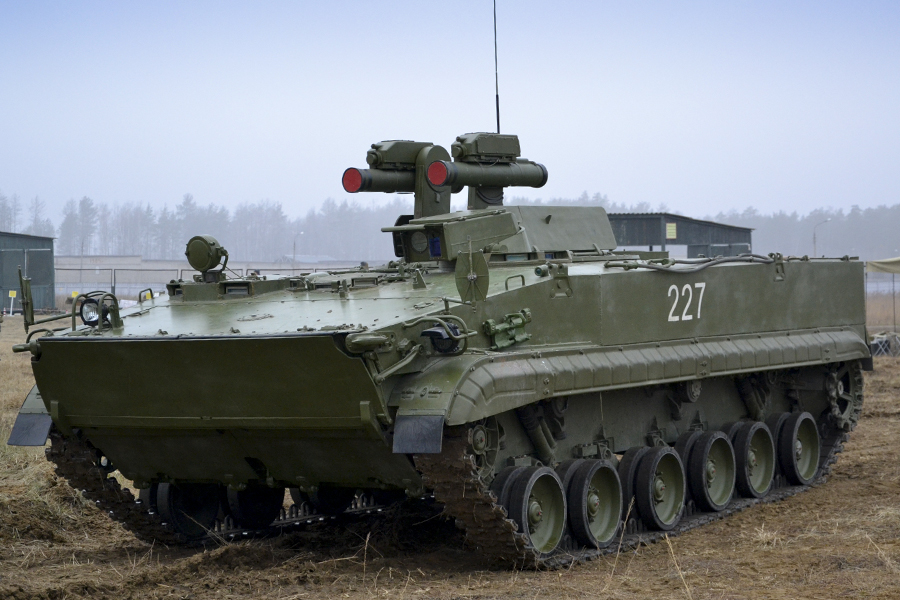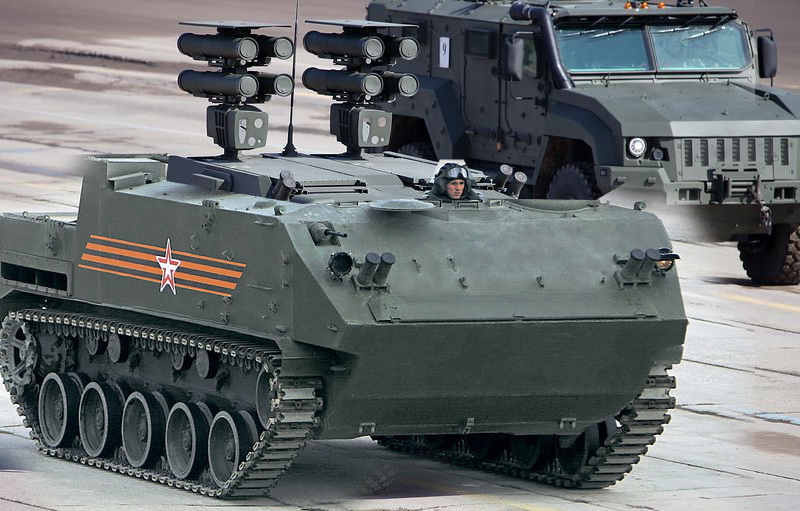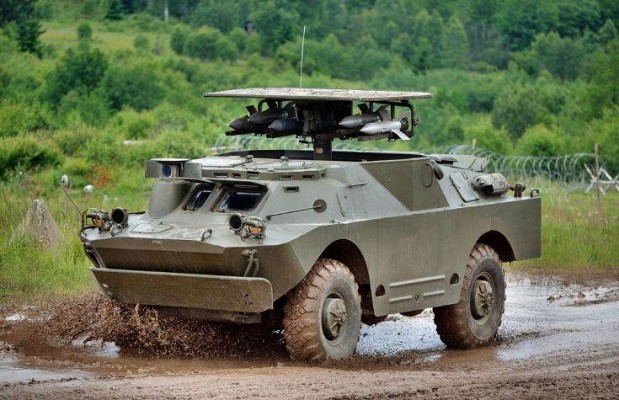- Yes
- No
- North Korean sub-tree in China
- United Korea tree
- Other
- I said no

Unknown official name
Brief History
North Korea has a surprisingly long history of tank and AFV production, with some of their most recent developments being very interesting. During the Korean War, and for a couple decades after, North Korea relied on Soviet hand-me-downs, namely T-34s and SU-76s, as well as small numbers of T-54s. Tank production began in the late 1960s, with domestic production lines for the PT-76 and T-55, which shifted to the Ch’ŏnma (effectively license-produced/reverse-engineered T-62s) in the mid-to-late 1970s.
The DPRK has experimented with a number of anti-tank guided missile carriers, first with imported Soviet 3M6 Shmel missiles on the 2P26 truck platform, then the Bulsae-1 (9M14 ‘Malyutka’) on both the 323 APC and ‘M1992’ APC, the former being produced in decent quantities, and the latter seemingly only a small batch of only a dozen vehicles or so. More modern ATGM vehicles have been seen in recent years, with the domestic Bulsae-4M on the UAZ-469 chassis in 2012, and then the ‘M2018’ 6x6 and ‘M2020’ 8x8 missile carriers in 2018 and 2020 respectively…
While the 8x8 ATGM launcher is based on an up-armoured ‘M2010’ 8x8 APC chassis, the 6x6 vehicle is derived from North Korea’s domestic 6x6 APC, first unveiled in 2010, which is (highly) inspired by their Soviet BTR-80s, although some features may have been taken from their older BTR-60PBs. It is essentially a slightly shorter BTR-80 with the 2nd set of wheels removed.
The ‘M2018’ 6x6 ATGM carrier’s official name has not been revealed, much like most of North Korea’s vehicles. It has been seen in videos undergoing testing, and has much more recently been spotted used by Russian forces in Ukraine. It was reported to have fired 6 of its missiles before retreating.
The name Bulsae-4 is often inaccurately used online (referring to either the missiles or the vehicle itself) – I explain the confusion below.
Characteristics
The ‘M2018’ carries a large turret with eight missile launchers. These fire a domestically produced NLOS (non-line-of-sight) missile. This is quite a large feat for North Korea, and was likely aided either by China, with technology from their HJ-10 NLOS missile, or from captured Israeli Spike NLOS missiles. The name Bulsae-4 is very often applied to this missile, but this is almost certainly inaccurate. In the documentary ‘The Mole’, it was revealed in an arms brochure that the official name for the DPRK’s upgraded 9M111-2 (Bulsae-2) is ‘Phoenix-4M’ (Bulsae = Phoenix). This would suggest Bulsae-4 is either unused, or refers to earlier variants of the upgraded Bulsae-2. Bulsae-5 refers to the DPRK’s reverse-engineered 9M133 Kornet, and as such, if the Bulsae naming series is continued, this missile is more likely than not called Bulsae-6. This is a complete guess though, and should not be taken as fact – I will refer to it as Bulsae-6 for the rest of this suggestion for simplicity’s sake.

- North Korea’s NLOS missiles – blue is the ground-launched variant, the other is an air-launched one.
NLOS missiles function by transmitting real-time video to the operator on the ground, enabling not only precise adjustments during flight, but also indirect engagement, capable of hitting targets at great ranges and hidden behind cover.
Details regarding the Bulsae-6 are unknown, but using the HJ-10 and Spike NLOS as examples, it should have a maximum range of at least 10km (HJ-10), possibly up to 15km (Spike NLOS Mk. 2), and a minimum range of around 1-3km. I could not find any penetration estimates for the Spike NLOS, but the HJ-10 has estimates up to 1,400mm of RHA with its HEAT warhead. I would expect the Bulsae-6 to have penetration of 1,000-1,400mm, with a velocity of around 150-250m/s.
The vehicle has no secondary armament. It has two laser-warning receivers and six smoke grenade launchers on the front of the turret.
Everything else is unknown but it is highly likely the engine and general armour layout remain the same as the original 6x6 APC (and by extension, the BTRs on which they were derived from). This would mean it has a 260hp engine, and is probably able to reach a top speed of around 90km/h. Armour-wise, the vehicle’s hull is likely 9mm all round. The turret is probably similar, as this vehicle is not expected to be on the frontlines.
Conclusion
This vehicle would be a great top-tier ATGM carrier for either a North Korean sub-tree for China, or a United Korean tech tree, with a BR of around 11.3-11.7 (or higher, when further decompression takes place). It would be a highly mobile vehicle capable of striking targets with powerful missiles from incredibly large distances, but would be highly limited in CQC (practically useless within 1km).
Specifications
Armament
- 8x Bulsae-6 launchers
- At least 1000mm penetration (estimated)
- 150-250m/s (estimated)
- 1-3km minimum range (estimated)
- 10-15km maximum range (estimated)
Armour
- Hull
- Front
- ~9mm
- Sides
- ~9mm
- Rear
- ~9mm
- Front
- Turret
- Front
- ~9mm (Estimated)
- Sides
- ~9mm (Estimated)
- Rear
- ~9mm (Estimated)
- Front
Mobility
- Speed
- ~ +90/-14km/h
- Weight
- Unknown, > 14.6t
- Engine power
- 260hp
Other
- 6x smoke grenades
- 2x laser warning receivers
Images
Sources
Spoiler
The Armed Forces of North Korea: On the Path of Songun – Stijn Mitzer and Joost Oliemans
https://bemil.chosun.com/site/data/html_dir/2022/02/17/2022021701906.html
North Korean Self-Propelled Anti-Tank Missile System Spotted Near Kharkiv














.jpg.149885fa057f49dbbe4c76ffd74827e4.jpg)



